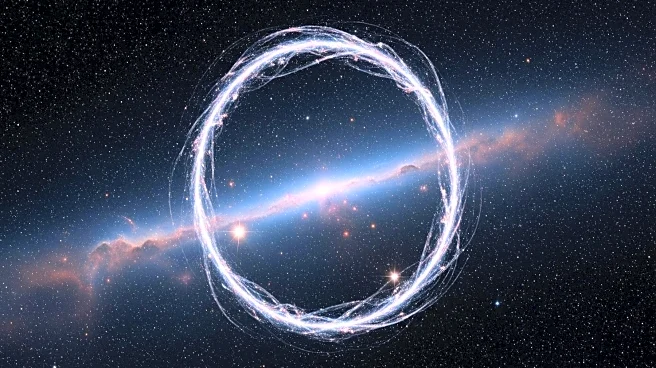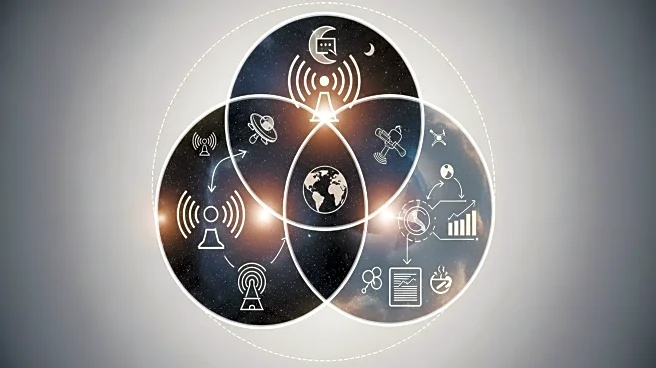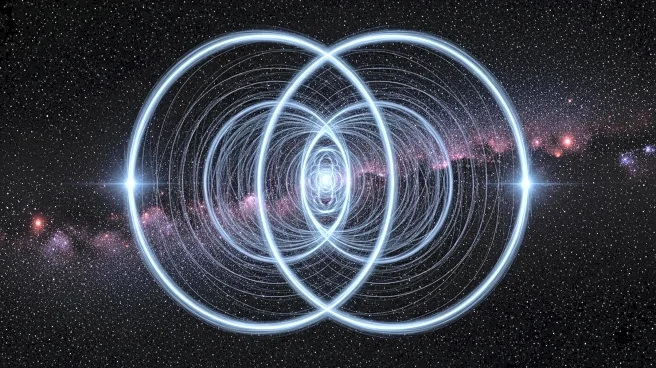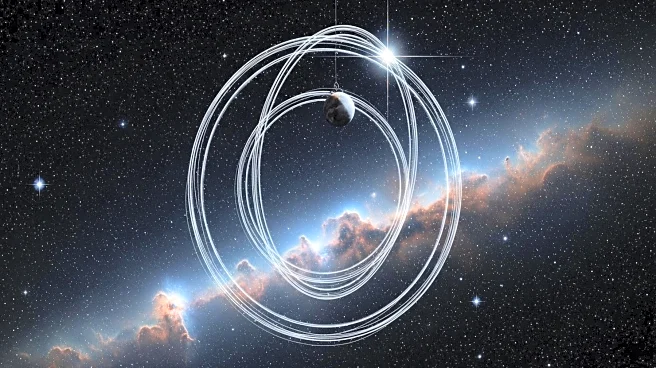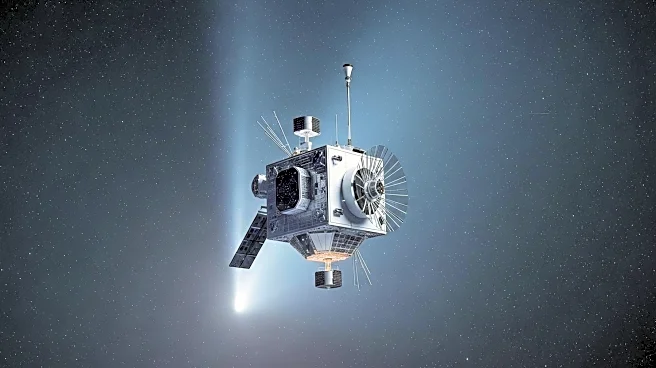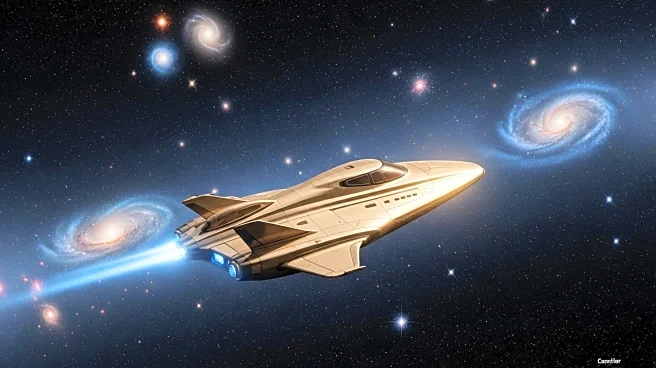What's Happening?
Citizen scientists from the RAD@home Astronomy Collaboratory in Mumbai have discovered a distant galaxy surrounded by two intersecting rings of radio light, known as Odd Radio Circles (ORCs). These rings, each about 300,000 light-years wide, are part of a larger radio cloud nearly 3 million light-years across. The discovery, published in the Monthly Notices of the Royal Astronomical Society, marks the first ORC found through citizen-assisted science and the first identified using the LOFAR network of antennas. ORCs, which may be shockwaves from merging black holes or galaxies, are among the most mysterious cosmic structures, with only a few known to exist.
Why It's Important?
The discovery of ORCs is significant as it provides insights into the complex interactions between galaxies and black holes. These structures could reveal how galaxies and black holes co-evolve, offering clues about the universe's formation and evolution. The findings highlight the potential of citizen science in contributing to major astronomical discoveries, demonstrating that non-professional astronomers can play a crucial role in advancing scientific knowledge. This discovery also emphasizes the importance of radio telescopes in detecting phenomena that are invisible in other wavelengths, expanding our understanding of the universe's hidden structures.


